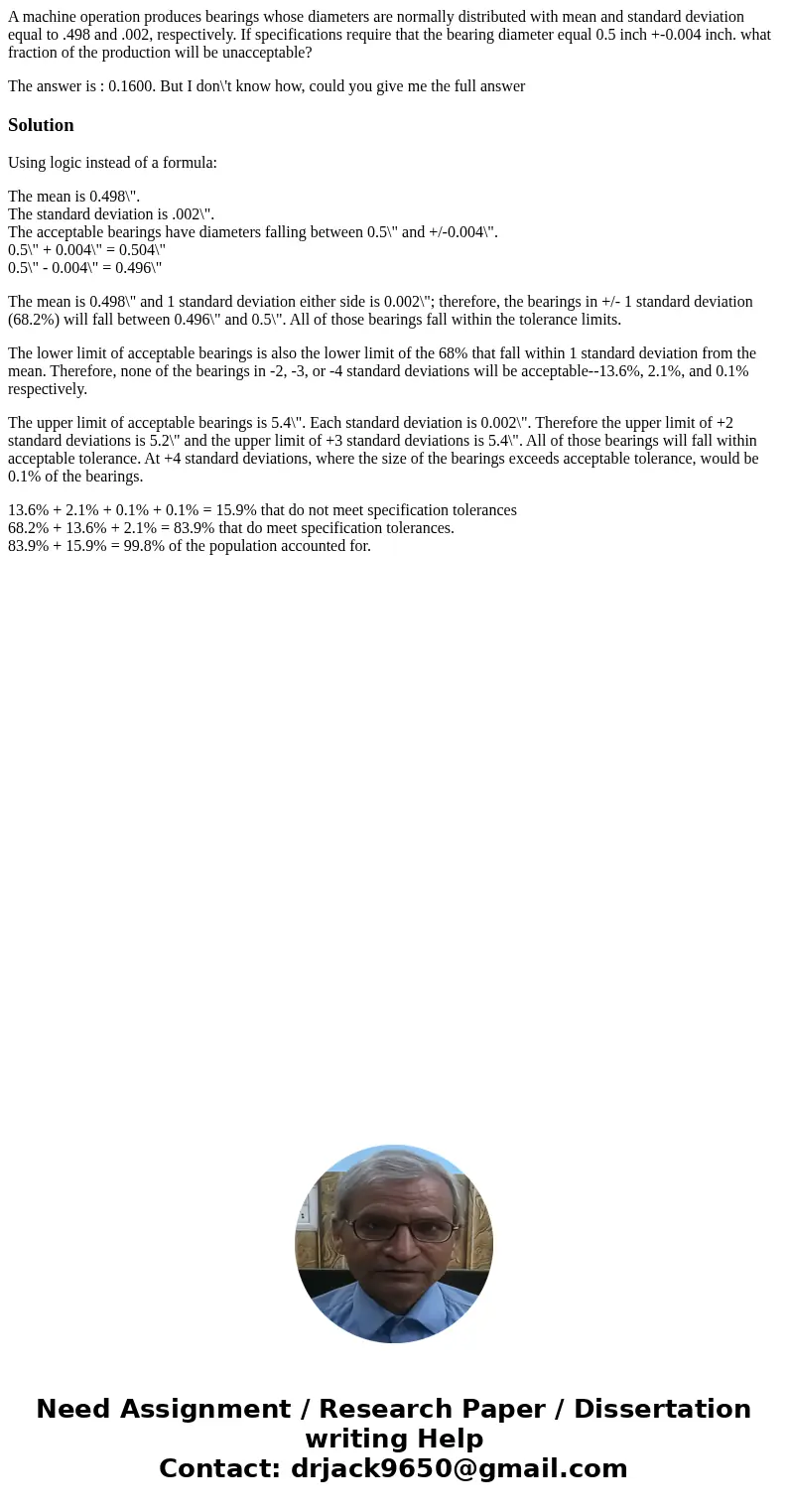A machine operation produces bearings whose diameters are no
A machine operation produces bearings whose diameters are normally distributed with mean and standard deviation equal to .498 and .002, respectively. If specifications require that the bearing diameter equal 0.5 inch +-0.004 inch. what fraction of the production will be unacceptable?
The answer is : 0.1600. But I don\'t know how, could you give me the full answer
Solution
Using logic instead of a formula:
The mean is 0.498\".
The standard deviation is .002\".
The acceptable bearings have diameters falling between 0.5\" and +/-0.004\".
0.5\" + 0.004\" = 0.504\"
0.5\" - 0.004\" = 0.496\"
The mean is 0.498\" and 1 standard deviation either side is 0.002\"; therefore, the bearings in +/- 1 standard deviation (68.2%) will fall between 0.496\" and 0.5\". All of those bearings fall within the tolerance limits.
The lower limit of acceptable bearings is also the lower limit of the 68% that fall within 1 standard deviation from the mean. Therefore, none of the bearings in -2, -3, or -4 standard deviations will be acceptable--13.6%, 2.1%, and 0.1% respectively.
The upper limit of acceptable bearings is 5.4\". Each standard deviation is 0.002\". Therefore the upper limit of +2 standard deviations is 5.2\" and the upper limit of +3 standard deviations is 5.4\". All of those bearings will fall within acceptable tolerance. At +4 standard deviations, where the size of the bearings exceeds acceptable tolerance, would be 0.1% of the bearings.
13.6% + 2.1% + 0.1% + 0.1% = 15.9% that do not meet specification tolerances
68.2% + 13.6% + 2.1% = 83.9% that do meet specification tolerances.
83.9% + 15.9% = 99.8% of the population accounted for.

 Homework Sourse
Homework Sourse